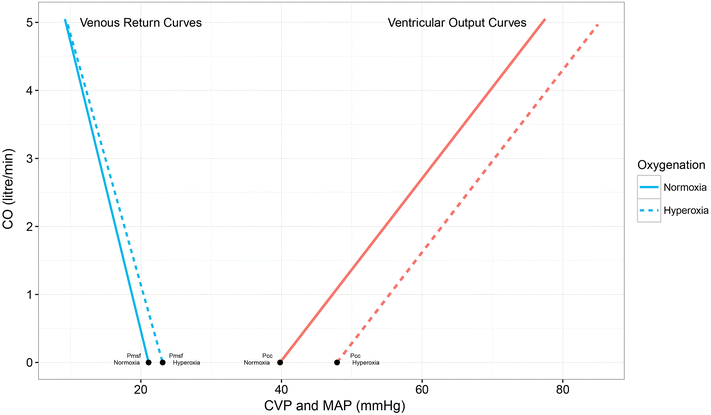Hemodynamic effects of short-term hyperoxia after coronary artery bypass grafting
- PMID: 28233196
- PMCID: PMC5323416
- DOI: 10.1186/s13613-017-0246-9
Hemodynamic effects of short-term hyperoxia after coronary artery bypass grafting
Abstract
Background: Although oxygen is generally administered in a liberal manner in the perioperative setting, the effects of oxygen administration on dynamic cardiovascular parameters, filling status and cerebral perfusion have not been fully unraveled. Our aim was to study the acute hemodynamic and microcirculatory changes before, during and after arterial hyperoxia in mechanically ventilated patients after coronary artery bypass grafting (CABG) surgery.
Methods: This was a single-center physiological study in a tertiary care ICU in the Netherlands. Twenty-two patients scheduled for ICU admission after elective CABG were enrolled in the study between September 2014 and September 2015. In the ICU, patients were exposed to a fraction of inspired oxygen (FiO2) of 90% allowing a 15-min wash-in period. Various hemodynamic parameters were measured using direct pressure signals and continuous arterial waveform analysis at three sequential time points: before, during and after hyperoxia.
Results: During a 15-min exposure to a fraction of inspired oxygen (FiO2) of 90%, the partial pressure of arterial oxygen (PaO2) and arterial oxygen saturation (SaO2) were significantly higher. The systemic resistance increased (P < 0.0001), without altering the heart rate. Stroke volume variation and pulse pressure variation decreased slightly. The cardiac output did not significantly decrease (P = 0.08). Mean systemic filling pressure and arterial critical closing pressure increased (P < 0.01whereas the percentage of perfused microcirculatory vessels decreased (P < 0.01). Other microcirculatory parameters and cerebral blood flow velocity showed only slight changes.
Conclusions: We found that short-term hyperoxia affects hemodynamics in ICU patients after CABG. This was translated in several changes in central circulatory variables, but had only slight effects on cardiac output, cerebral blood flow and the microcirculation. Clinical trial registration Netherlands Trial Register: NTR5064.
Keywords: Arterial oxygenation; Cerebral blood flow velocity; Hemodynamics; Hyperoxia; Intensive care unit; Microcirculation; Thoracic surgery.
Figures

References
-
- Helmerhorst HJ, Roos-Blom MJ, van Westerloo DJ, de Jonge E. Association between arterial hyperoxia and outcome in subsets of critical illness: a systematic review, meta-analysis, and meta-regression of cohort studies. Crit Care Med. 2015;43(7):1508–1519. doi: 10.1097/CCM.0000000000000998. - DOI - PubMed
LinkOut - more resources
Full Text Sources
Other Literature Sources

